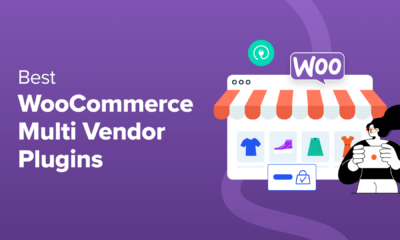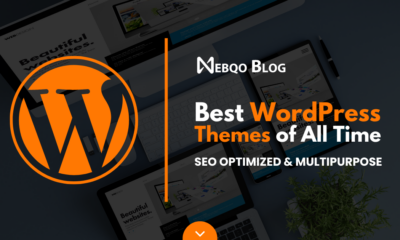AFFILIATE MARKETING
Kendrick Lamar Earns Achievement No Other Artist Can Touch in 2017

COMPLEX participates in various affiliate marketing programs, which means COMPLEX gets paid commissions on purchases made through our links to …
Source link
AFFILIATE MARKETING
Gen Z Is Choosing Trade Schools as a Fast Track to Business

It’s no secret that Gen Z is entrepreneurial, with research showing that the majority would take a social media creator job over a standard 9-to-5. Nearly half are going the extra mile by starting a side hustle to be able to afford “the normal stuff.”
Now, new research shows that trade school could also play into Gen Z’s entrepreneurial aspirations, especially with rising AI capabilities and growing education costs.
According to a January National Student Clearinghouse report, vocational community college enrollment has grown 16% since 2018. Growth was concentrated mainly in cities and suburbs, which recorded 3.5% and 3.7% respective increases in students opting for trade programs.
Last year’s version of the report found that enrollment in programs across the construction, culinary, and mechanic trades increased 19.3%, 12.7%, and 11.5% respectively from 2021 to 2022.
“We’re seeing that 75% of Gen Z is saying they are interested in being an entrepreneur,” career coach and The Ramsey Show co-host Ken Coleman told Fox Business. “They want to work for themselves… trades offer a quicker, cheaper path to being able to work for themselves, create jobs for other people, and plug into—which is the real backbone of our economy—small business.”
While students were choosing trade schools in higher numbers, fewer were deciding to go for a four-year undergraduate degree.
A separate April report from the National Student Clearinghouse detailed that the number of students completing undergraduate degrees dropped by nearly 3% in the 2022 to 2023 school year — continuing an overall decline from the previous year.
In an NPR article published last week, Sy Kirby, a 32-year-old who owns a construction company, said he knew early that he was going to choose a trade school — and he has no regrets.
Kirby chose to work at a local water department when he was 19 years old rather than go to college, he told NPR. He calls Gen Z the “toolbelt generation,” a term also used by The Wall Street Journal.
“I was facing a lot of pressure for a guy that knew for a fact that he wasn’t going to college,” Kirby told NPR. “I knew I wasn’t going to sit in a classroom, especially since I knew I wasn’t going to pay for it.”
AFFILIATE MARKETING
This Set of Chef’s Knives Is Nearly $300 Off

Disclosure: Our goal is to feature products and services that we think you’ll find interesting and useful. If you purchase them, Entrepreneur may get a small share of the revenue from the sale from our commerce partners.
Cooking at home can be great for busy professionals because it’s budget-friendly, easier to stay healthy, and meditative. Whether you’re a home cook or an entrepreneur on the hunt for a unique gift that could stand out to a colleague, potential business partner, or friend, this limited-time deal is well worth checking out.
This Seido Japanese Master Chef’s 8-Piece Knife Set comes with a gift box and is on sale for $109.97 (reg. $429). These high-quality knives are made with very durable and strong high-carbon stainless steel. Their forged construction incorporates a sloped bolster and acute 15° angles (compared to the typical 25° seen more commonly with Western knives).
This set includes the following knives:
- 8″ chef’s knife
- 8″ slicing knife
- 8″ bread knife
- 7″ cleaver
- 7″ Santoku knife
- 5″ Santoku knife
- 6″ boning knife
- 3.5″ paring knife
To add an air of high-class presentation to this deal, it also comes with a stylish gift box that can securely store the knives for travel or passing on to a business partner.
This set has an impressive 4.6/5 star average rating among verified purchasers. One recent perfect five-out-of-five star review reads, “Affordable price. Excellent workmanship. Fast shipment. Overall, great product that’s hard to beat.”
Discover the quality of a high-end set of knives to improve your home cooking, or gift them to someone you work with.
This Seido™ Japanese Master Chef’s 8-Piece Knife Set comes with a gift box and is on sale for $109.97 (reg. $429).
StackSocial prices subject to change.
AFFILIATE MARKETING
Gear up for Summer Camping with $22 Off This Power Bank Flashlight

Disclosure: Our goal is to feature products and services that we think you’ll find interesting and useful. If you purchase them, Entrepreneur may get a small share of the revenue from the sale from our commerce partners.
Summer is almost here and spending time outdoors is known to ease stress and anxiety and enhance cognition. If you plan on spending some time in the great outdoors with clients, employees, or family, you should make sure you have the right tools. We’re not talking about tents and camping stoves; we’re talking about emergency tools, like this Outdoor Flashlight with Flame Simulator & 2400mAh Power Bank.
This light can keep your devices powered up, which keeps you reachable and able to handle any potential work emergencies. It also has a cool LED screen that simulates a campfire to add to the fun.
Most importantly, this outdoor flashlight provides ultra-bright LED lighting to give you visibility at night. The fireplace simulator mode also adds some light, with an adjustable flame setting that helps set the ambiance and provides some additional visibility while mimicking a real fire.
The durable flashlight is made with COB technology to provide a bright and even light output and is rechargeable via a USB-C charger or via solar panels during the day. It can last for up to 24 hours on a single charge and is built to withstand all weather conditions.
And perhaps best of all, it features a compact, portable design that makes it easy to pack in your car or carry in your backpack. Whether you’re going fully off the grid or just spending a night in the backyard with the family, it will come in handy.
Gear up for summer entertaining and fun.
Right now, you can get this Outdoor Flashlight with Flame Simulator and 2400mAh Power Bank for just $39.99, a 36% savings from the original price of $62.
StackSocial prices subject to change.
-

 MARKETING6 days ago
MARKETING6 days agoEffective Communication in Business as a Crisis Management Strategy
-

 SEARCHENGINES6 days ago
SEARCHENGINES6 days agoGoogle Won’t Change The 301 Signals For Ranking & SEO
-

 SEO5 days ago
SEO5 days agobrightonSEO Live Blog
-

 PPC6 days ago
PPC6 days ago9 Ecommerce Trends to Boost Your Business in 2024
-

 SEO6 days ago
SEO6 days agoHow To Write ChatGPT Prompts To Get The Best Results
-

 SEO4 days ago
SEO4 days agoGoogle March 2024 Core Update Officially Completed A Week Ago
-
SEARCHENGINES5 days ago
Daily Search Forum Recap: April 25, 2024
-

 WORDPRESS4 days ago
WORDPRESS4 days ago9 Best WooCommerce Multi Vendor Plugins (Compared)















